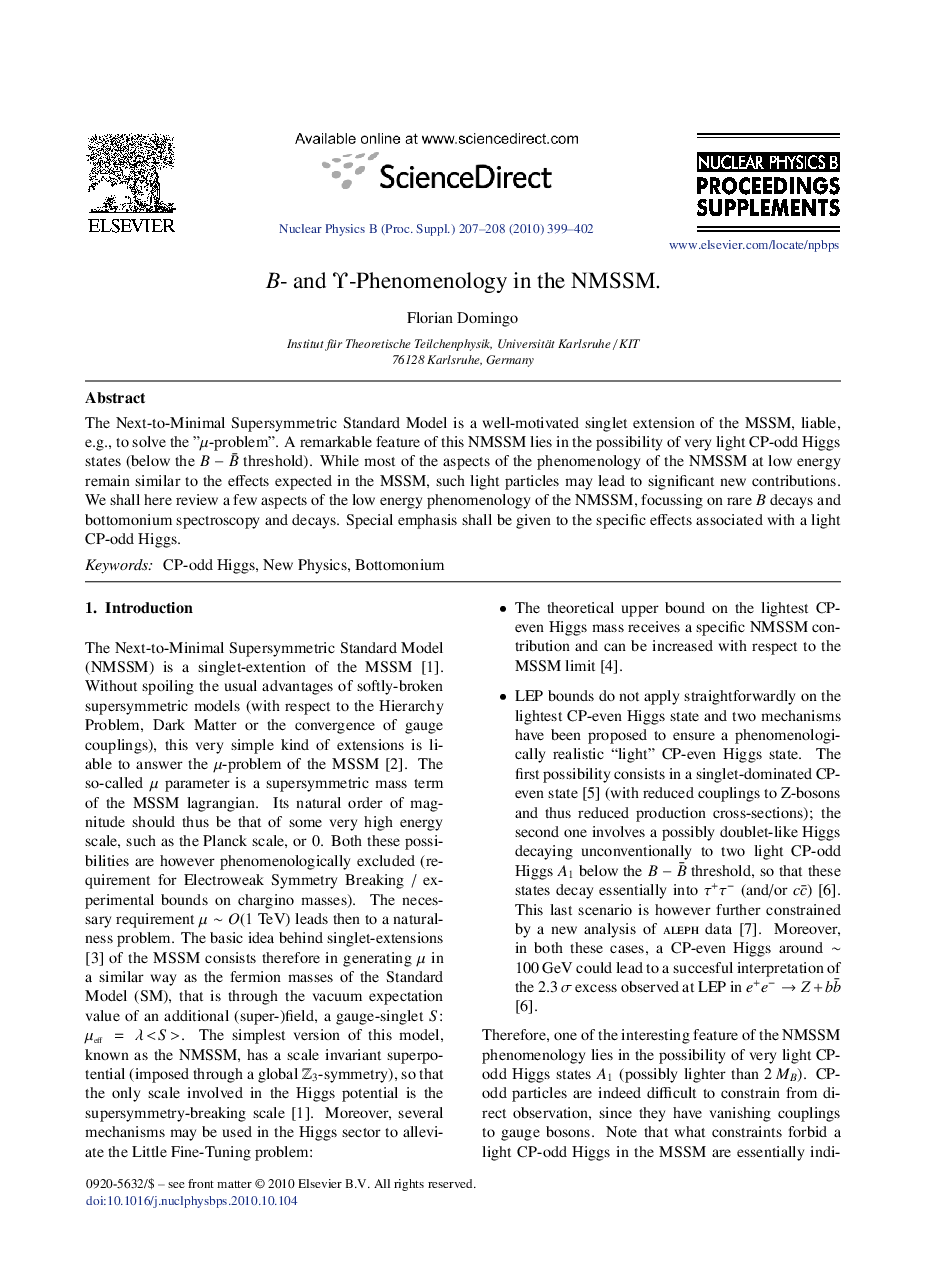| Article ID | Journal | Published Year | Pages | File Type |
|---|---|---|---|---|
| 8186114 | Nuclear Physics B - Proceedings Supplements | 2010 | 4 Pages |
Abstract
The Next-to-Minimal Supersymmetric Standard Model is a well-motivated singlet extension of the MSSM, liable, e.g., to solve the “μ-problem”. A remarkable feature of this NMSSM lies in the possibility of very light CP-odd Higgs states (below the BâB¯ threshold). While most of the aspects of the phenomenology of the NMSSM at low energy remain similar to the effects expected in the MSSM, such light particles may lead to significant new contributions. We shall here review a few aspects of the low energy phenomenology of the NMSSM, focussing on rare B decays and bottomonium spectroscopy and decays. Special emphasis shall be given to the specific effects associated with a light CP-odd Higgs.
Keywords
Related Topics
Physical Sciences and Engineering
Physics and Astronomy
Nuclear and High Energy Physics
Authors
Florian Domingo,
